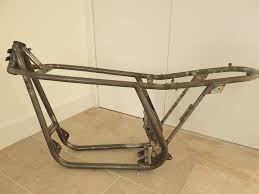t ingermanson
VIP MEMBER
- Joined
- Oct 17, 2018
- Messages
- 531
He made a few road-going frames for twins as well, but details are scant. Sure would like to see some numbers on both of them, the Tickle T5, and the Lowboy. They sure look small.
The tube down from the headstock to the cross piece is a good idea. Friends using McIntosh Manx frames for Velocettes take two tubes down from the headstock to the top rail. One either side..
G M A Engineering .

looks like its oil in flame .


I believe that's from Jeff. He sold his frame and motor off and never completed his project. Wonder where it went...Some info here.

Petty Manx Norton 350cc Replica - The Classic Motor Hub
The motorcycle we are proud to offer for sale is a Replica of the Petty Manx 350cc. This Petty frame kit was acquired by Ray Petty’s family 15 years ago and it was built up to a complete bike around 5 years ago for Ray’s Grandsonclassicmotorhub.com
Road frame info from a site member that hasn’t posted in a while.
If the rake on the steering head is 26 degrees and the wheels are 18s, when the motor is forward, the handling is likely to feel heavy. If the rake is 24.5 degress and the wheels are 19s, when the motor is forwarnd the handling feels light, and better. But these days, where cqan we buy 19 inch tyres , or even 18 inch ?Storm 42 bought a Petty chassis and will be racing it this year. He says it really is quite small. Also that the engine is in a different position to a stock Manx, being further forward in the frame to get more weight more forward. So there are perhaps more changes than are first apparent.
Yes, it was from Jeff. Can’t remember who/where the project went. He had a lot of rare/trick parts to go with it.I believe that's from Jeff. He sold his frame and motor off and never completed his project. Wonder where it went...
Looking at the details on that write-up, it's no wonder the tubing cracked, if it was a high carbon 1.125" at .056" wall, that's pretty light! Made for speed, not the long haul.
